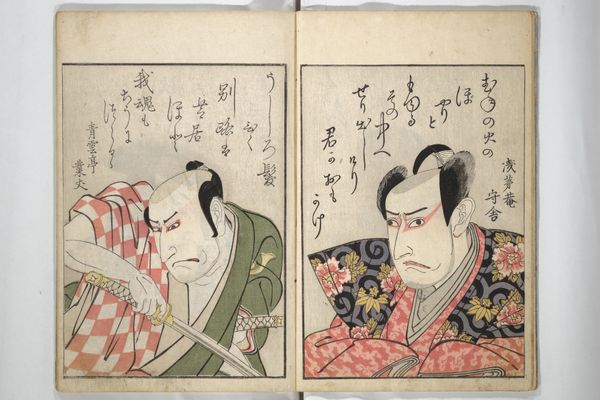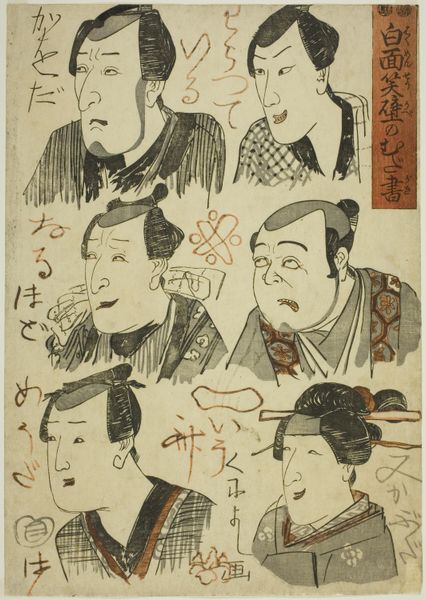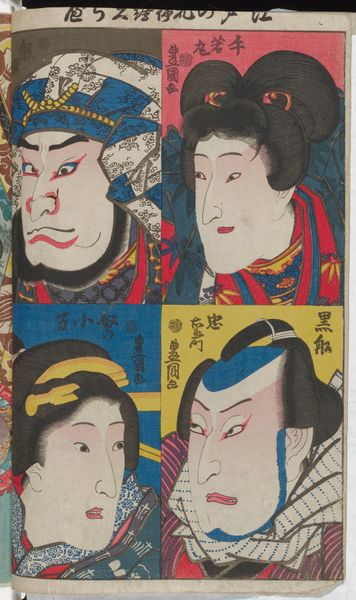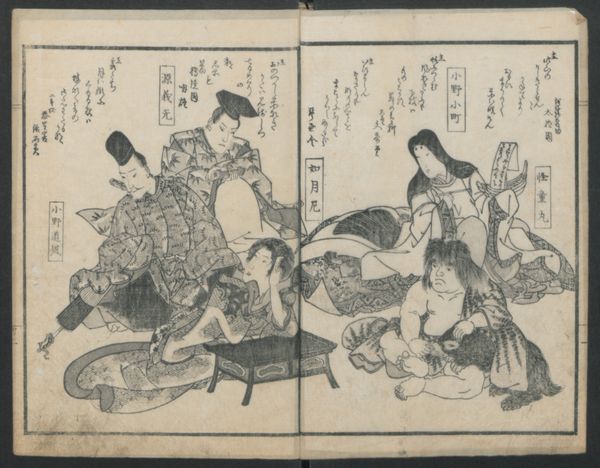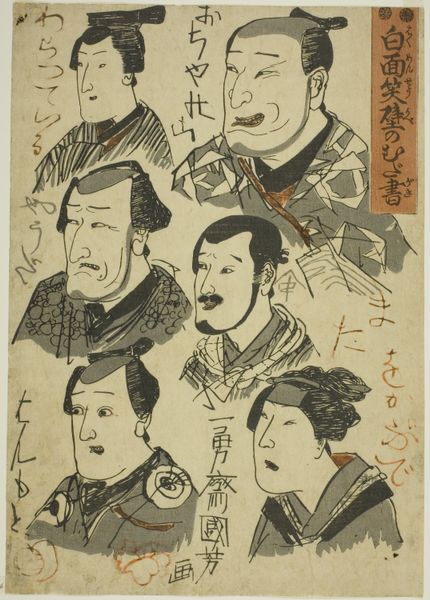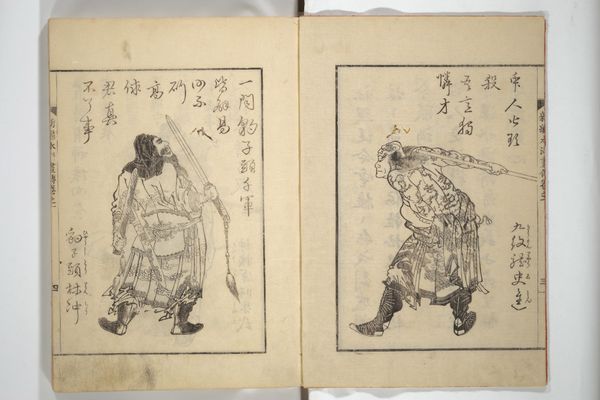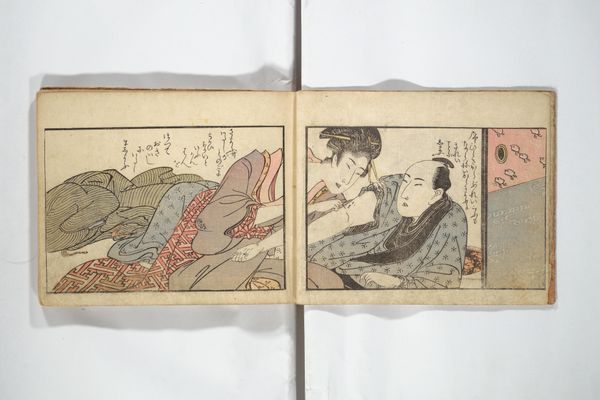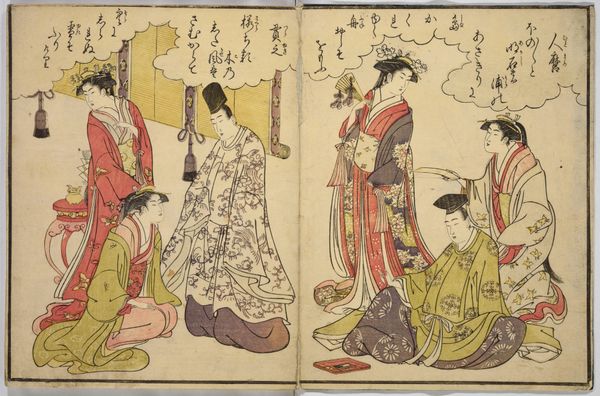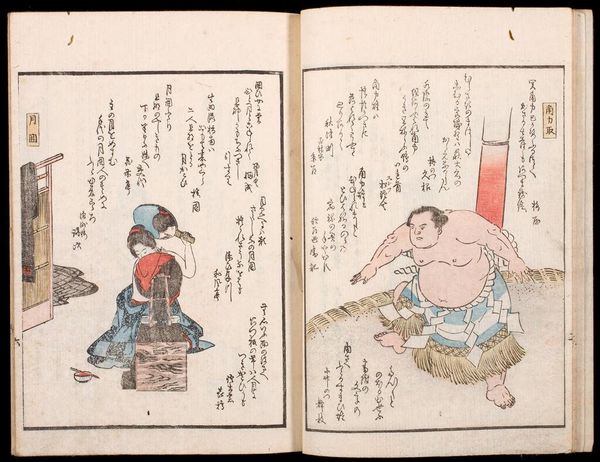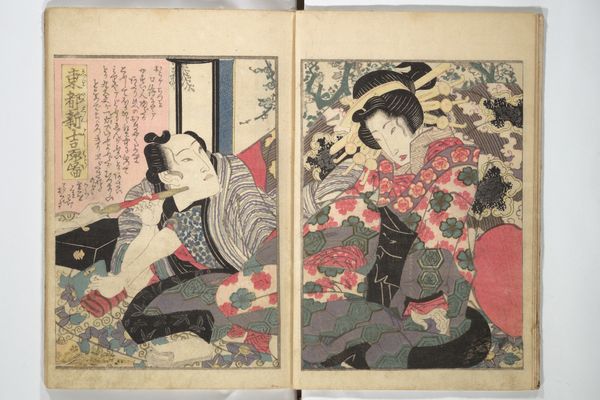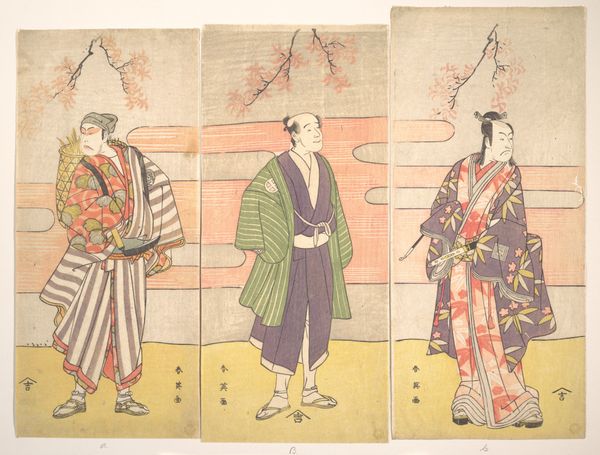
The Thirty-Six Immortals of Poetry as Kabuki Actors 1835
0:00
0:00
print, woodblock-print
#
portrait
# print
#
asian-art
#
ukiyo-e
#
figuration
#
woodblock-print
#
genre-painting
Dimensions: 10 1/16 × 7 5/16 in. (25.6 × 18.5 cm)
Copyright: Public Domain
Editor: This is "The Thirty-Six Immortals of Poetry as Kabuki Actors," a woodblock print by Utagawa Kunisada from 1835. It feels like an intimate glimpse into the Edo period's theater scene, but the expressions are so intense! What do you see in this piece that maybe I’m missing? Curator: I see a fascinating commentary on the performative nature of identity itself. Kunisada is layering representation upon representation – poets, already figures of artistic creation, are re-imagined as kabuki actors. What does it mean to embody another's story, especially within the rigid social structure of 19th century Japan? Are these portraits about reverence or a sly critique? Editor: That’s interesting. So, you’re saying it’s not just portraits, but also a kind of social commentary? Is the Kabuki aspect just decorative? Curator: Not at all. Kabuki was often associated with the common classes, a space for expressing desires and critiques perhaps suppressed elsewhere. Juxtaposing these “immortals” with this popular form might be a deliberate blurring of high and low culture, subtly questioning who gets to be remembered, whose stories are valued. How does it make you consider the role of artists? Editor: I hadn’t thought about the class aspect. So it seems that this piece makes one rethink hierarchies and perhaps hidden expressions of cultural resistance. Curator: Exactly. It asks us to consider art not just as aesthetic objects, but as active participants in cultural dialogue. Editor: I see it so differently now. Thanks for providing context and new avenues for thinking! Curator: My pleasure. Let’s keep questioning, challenging, and opening dialogues!
Comments
No comments
Be the first to comment and join the conversation on the ultimate creative platform.
